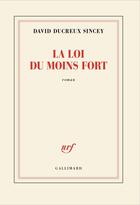Résumé:
Hay is the oldest, and still the most important, conserved fodder, despite its dependence on suitable weather at harvest time. It can be made with simple equipment, manually or with mechanization, and many small-scale farming systems make hay to assure livestock feed through the lean season.... Voir plus
Hay is the oldest, and still the most important, conserved fodder, despite its dependence on suitable weather at harvest time. It can be made with simple equipment, manually or with mechanization, and many small-scale farming systems make hay to assure livestock feed through the lean season.
This publication discusses hay and hay crops in a wide range of situations, emphasizing small-scale techniques. Livestock must have feed all year round. Crop growth is determined by the weather, but green feed is only available at certain times of year, and the shorter the growing season, the more uneven its distribution in time. In all but the most clement climates, therefore, in times of scarcity, if loss of weight and production is to be reduced or avoided, feed must be provided to supplement grazing and green forage. The conservation of forage and crop residues is a traditional way to reduce seasonal variations in availability.
Haymaking involves reducing the moisture content of cut herbage in the field from an initial 70 - 90% to 15 - 20% - simple in theory, but very dependent on the weather and demanding skill and judgement from the farmer. Hay is classed as a roughage, i.e., a feed with over 18% crude fibre and under 20% crude protein in its dry matter (DM); in practice, most hays have a feeding value well below these levels. It is rarely a complete food and must be used as part of an overall feeding system. Crop residues, straws and stovers, mainly but not exclusively from cereals, are also important as lean-season feed for ruminants, and are often used in association with hay. Since the subjects are so closely linked and the technology and equipment similar, they are dealt with together. The emphasis is on crops specifically grown for hay, and on natural grassland.
Leys which are both mown and grazed are traditionally used in rotations on large farms in some temperate regions, but for small-scale farmers (and in this context many farms are less than 2 ha arable), grazed pasture is not a practical option.
Storing forage for use in the non-growing season is an ancient practice which probably originated in countries where climatic conditions for hay-making were good, where livestock were important and where herbage could dry off as standing hay. Lucerne, the finest forage and hay crop, was developed in central Asia (Asia Media, when that meant a country!) several centuries before our era. Storage of straws and crop residues for feed is probably as old as cereal cultivation. The domestication of lucerne was closely associated with the development of the horse as a war animal. The evolution of fodder growing and haymaking, until modern times, was more associated with draught animals, cavalry and transport than with dairying.
Until the development of railways and the internal combustion engine, vast quantities of feed were needed, in cities and in the country, to feed draught animals. Such animals have largely vanished from developed countries, but remain important elsewhere, in both rural and urban work.














